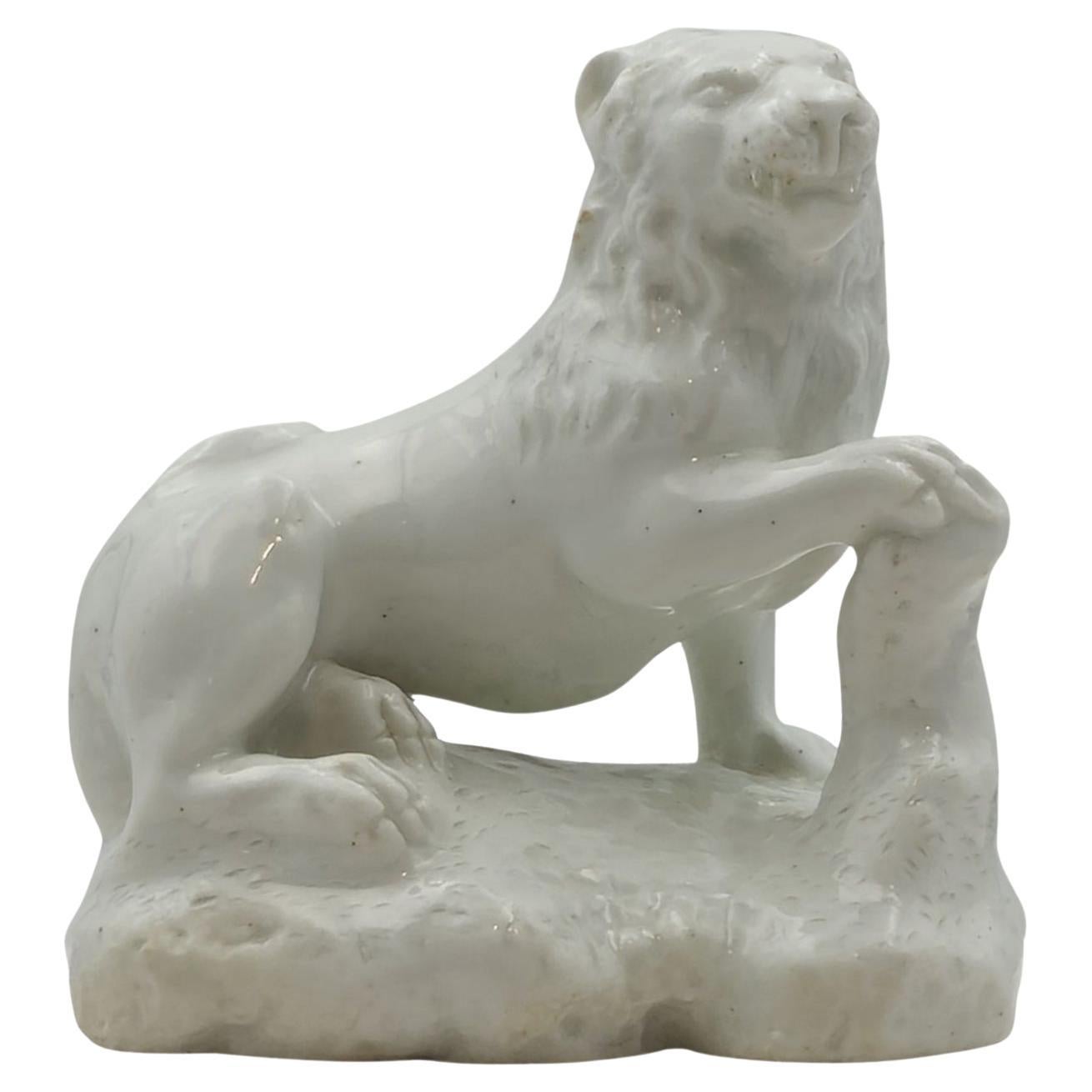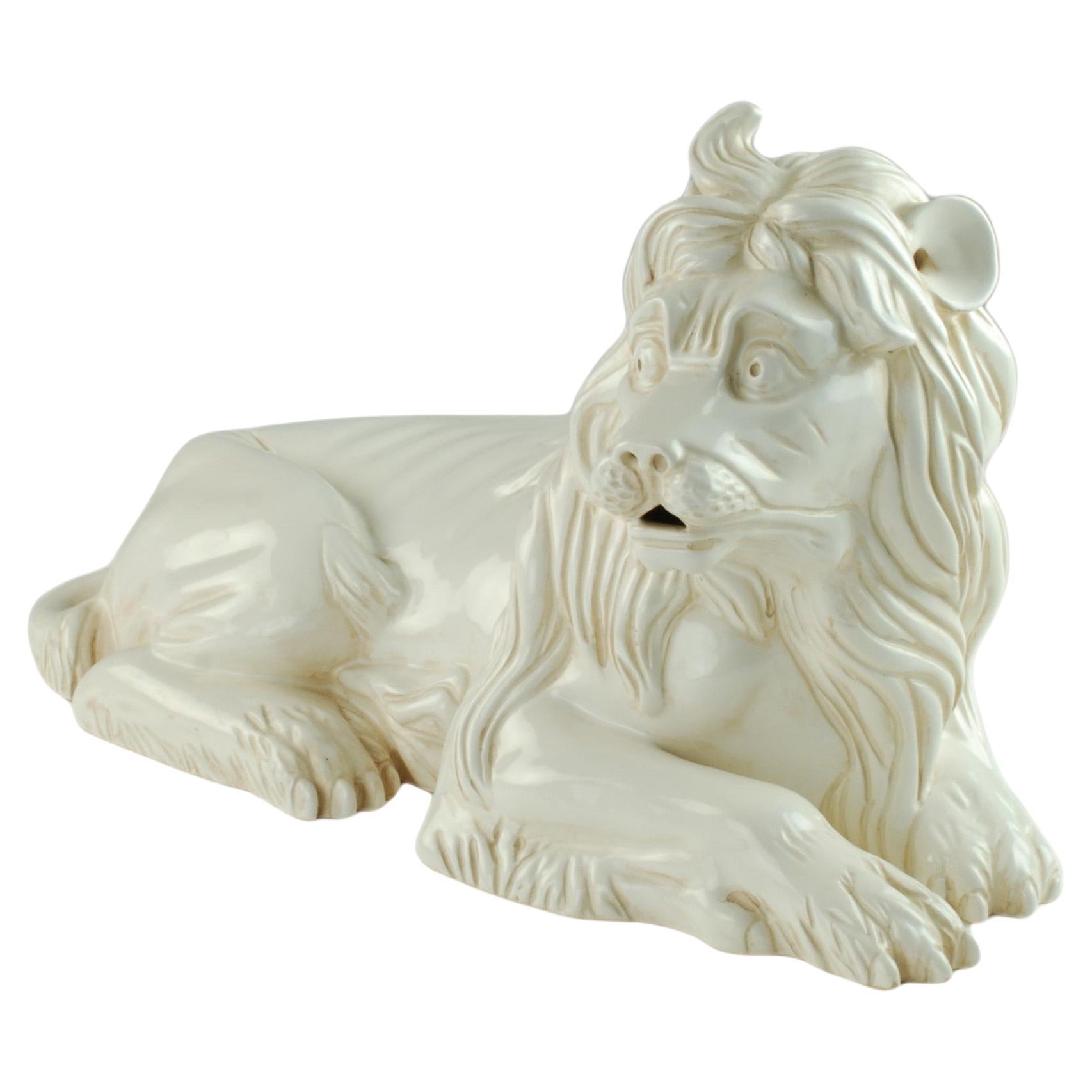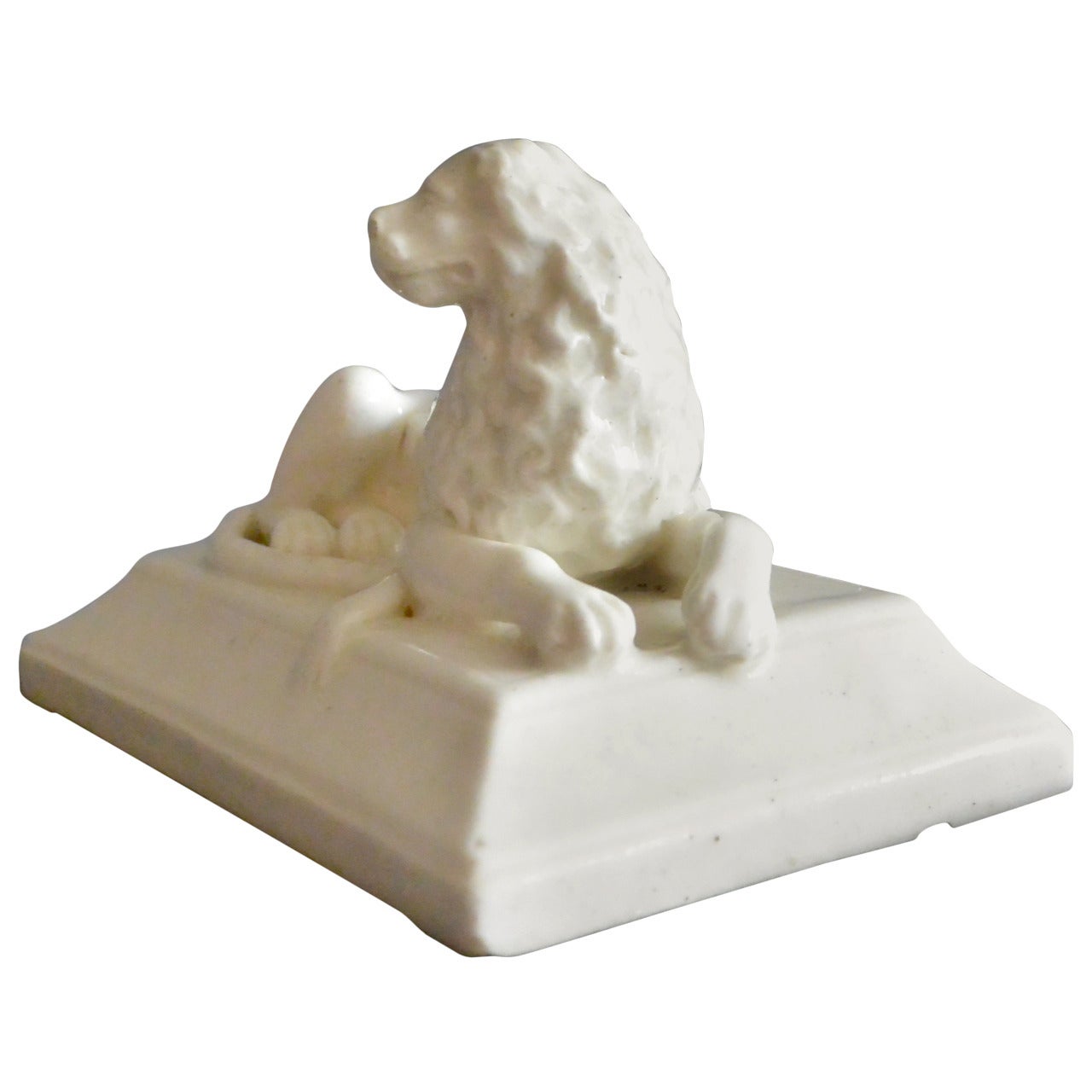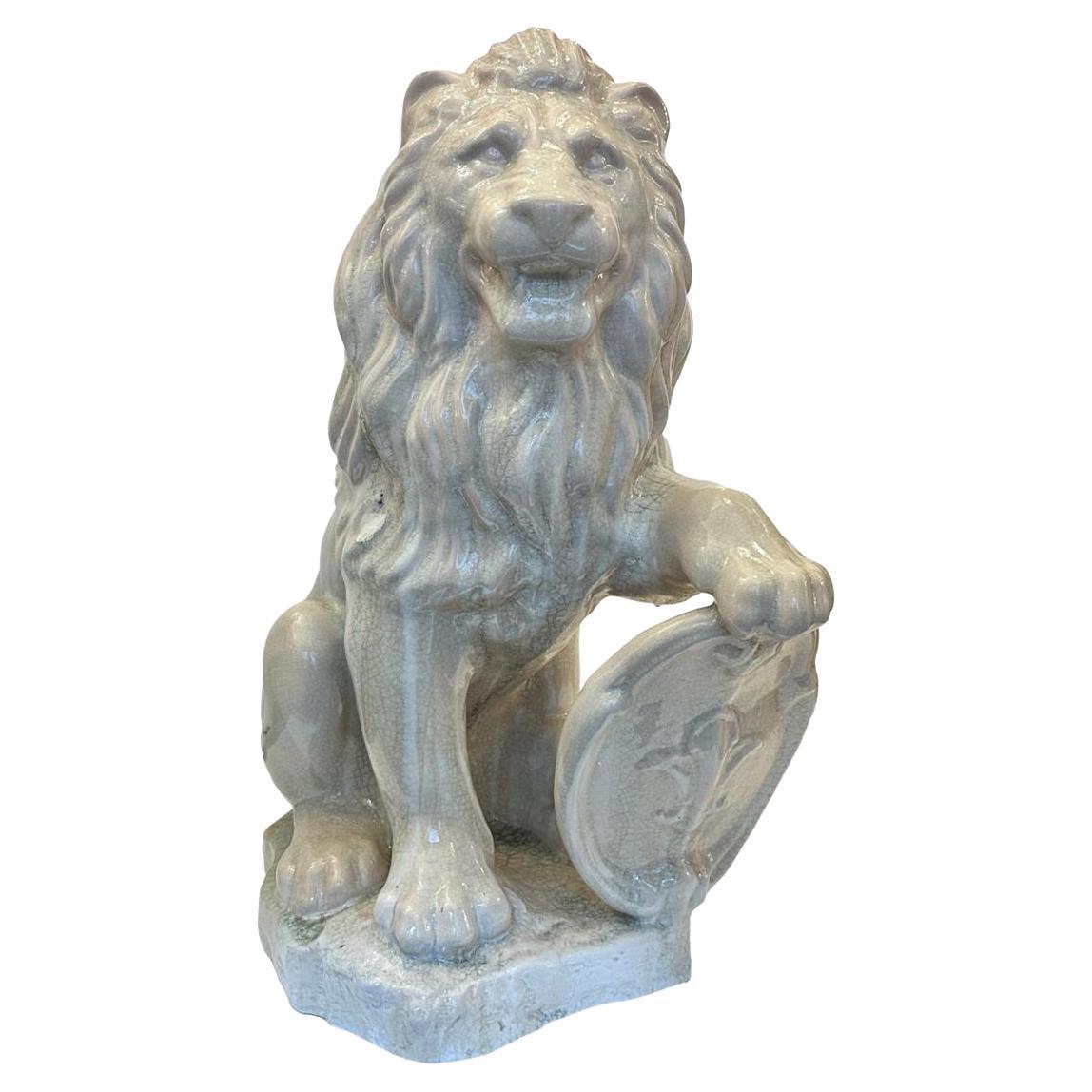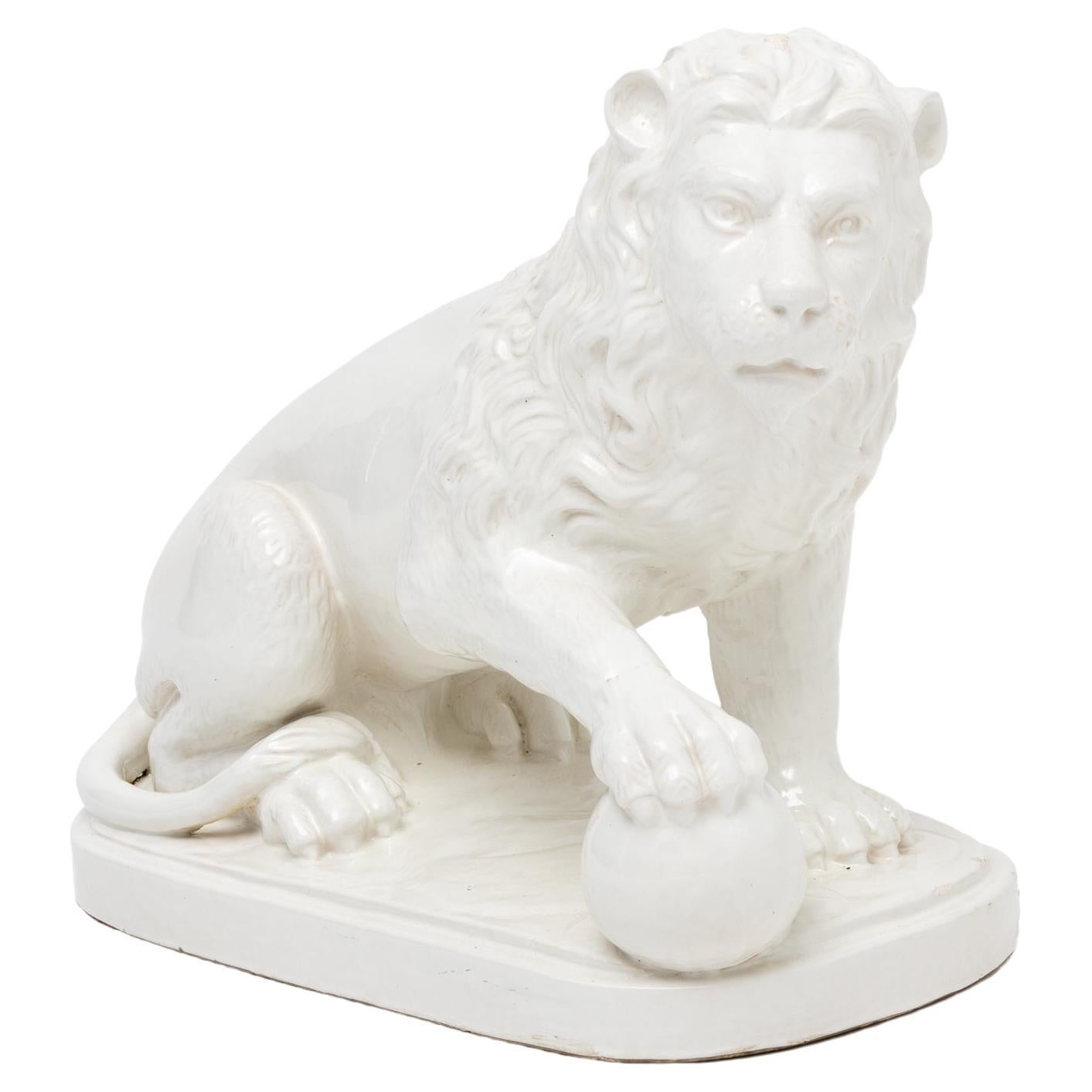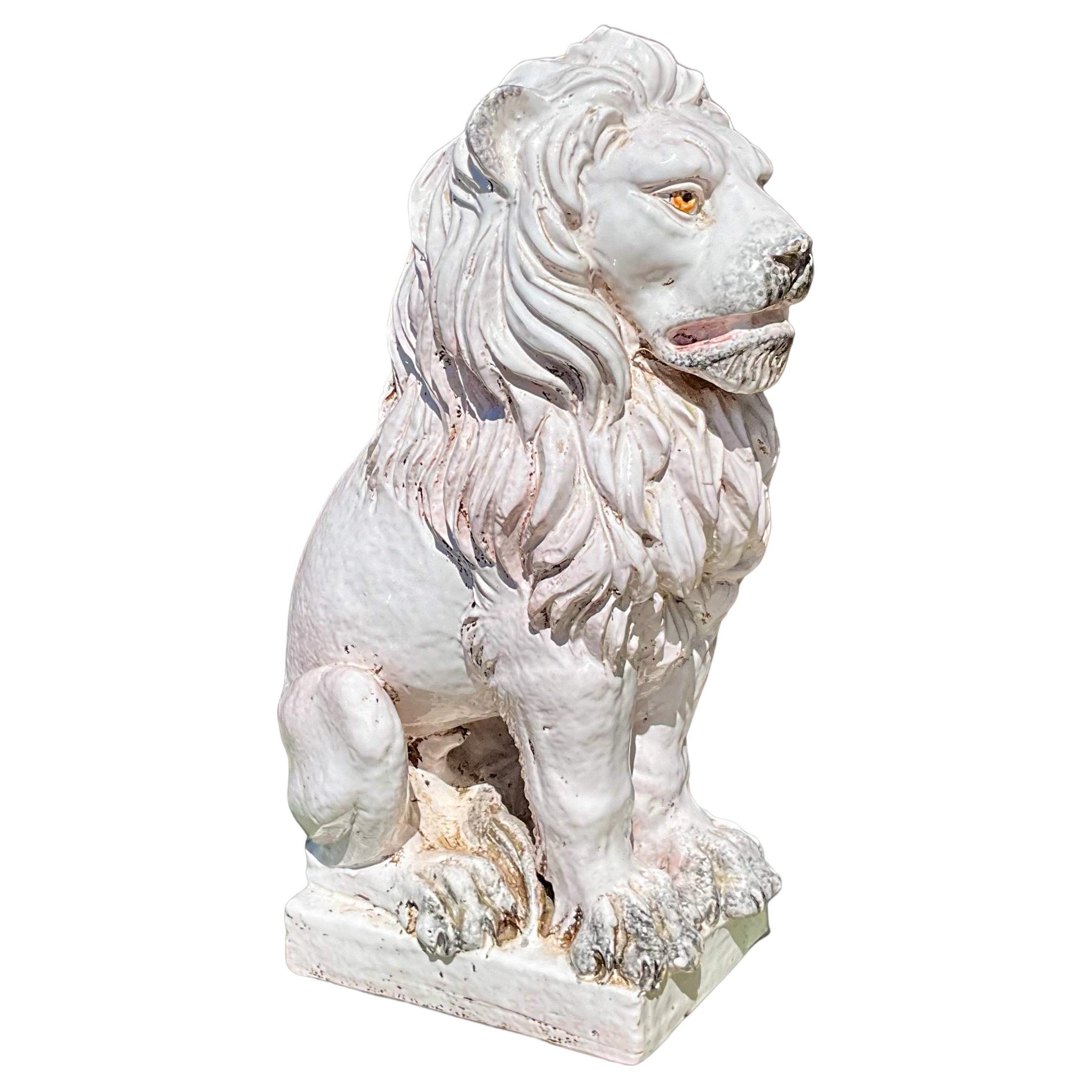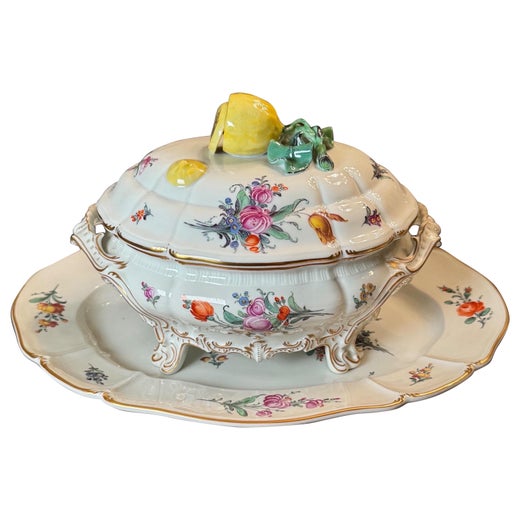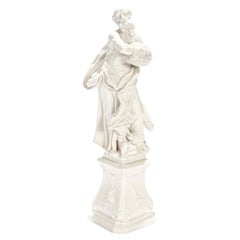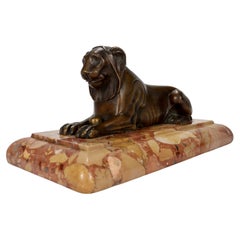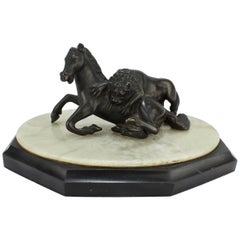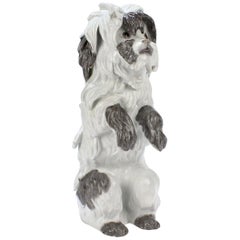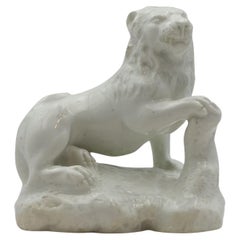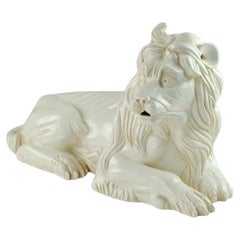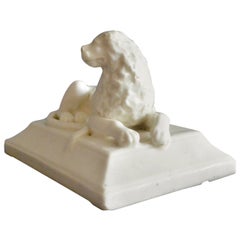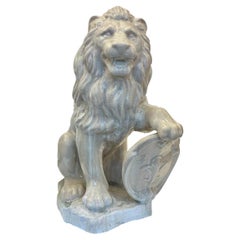Nymphenburg Blanc de Chine Porcelain 'Lion Baroque' Figurine with Bavarian Crest
About the Item
- Creator:Joseph Wackerle (Artist),Nymphenburg Porcelain (Manufacturer)
- Dimensions:Height: 9 in (22.86 cm)Width: 5 in (12.7 cm)Depth: 4.13 in (10.5 cm)
- Style:Baroque (In the Style Of)
- Materials and Techniques:
- Place of Origin:
- Period:
- Date of Manufacture:20th Century, possibly 21st Century
- Condition:Wear consistent with age and use. There is crazing to the glaze throughout (especially to the plinth and the lion's left side). Otherwise, there are some very fine & light surface scratches and other signs of expected light wear consistent with age.
- Seller Location:Philadelphia, PA
- Reference Number:Seller: 8142024173745DSAINVCHJL241stDibs: LU1610241242612
Nymphenburg Porcelain
Nymphenburg — one of Europe’s most venerable porcelain factories — was founded near Munich in 1747 by Maximilian III Joseph, the elector of Bavaria. It didn’t begin producing under the name we know today, however, until 1761, when it was moved to Nymphenburg Palace.
Porcelain was invented in East Asia around 2,000 years ago, and its formula, which requires a special clay called kaolin, became a closely guarded secret. It wasn’t until the early 1700s that chemists at Meissen, Germany, in the employ of Augustus II the Strong, the elector of Saxony, discovered a process for making true, as opposed to soft-paste, porcelain. Soon factories across Europe were producing fine porcelain services and sculpture for an elite clientele.
Nymphenburg was one of these factories, manufacturing elaborate services for dinner, dessert, coffee and tea, and sculptures for the Bavarian nobility. Round objects, such as Nymphenburg plates and vases, were turned on potter’s wheels, while more complex ones, like figures, were slip cast in molds. This technique ensured that the pieces’ dimensions were precise and consistent. Once shaped, they were fired and, after that, hand-decorated by experienced china painters, who finished each to exacting standards.
Among Nymphenburg’s most famous objects are its lively and charming Rococo-style figurines, most often depicting Commedia dell'Arte characters or exotic Chinese figures. Today, the company makes versions of its historic figurines with updated forms and decorations by such designers as Christian Lacroix and Vivienne Westwood.
It also still makes one of its earliest, and eternally popular, china patterns: the floral Cumberland, created in 1765 by Franz Anton Bustelli as the electoral court service. Cumberland is one of more than 20,000 patterns housed today in Nymphenburg’s archive, enabling owners of incomplete sets to find replacements. In addition, the company has engaged contemporary designers such as Ted Muehling and Hella Jongerius to create witty new designs that celebrate the firm’s history while giving it a fresh spin.
Find authentic Nymphenburg Porcelain decorative objects, tableware and other items on 1stDibs.
- ShippingRetrieving quote...Shipping from: Philadelphia, PA
- Return Policy
More From This Seller
View All20th Century German Rococo Figurative Sculptures
Porcelain
Antique Late 19th Century Egyptian Revival Animal Sculptures
Marble, Bronze
Antique 19th Century Italian Grand Tour Animal Sculptures
Marble, Slate, Bronze
20th Century French Rococo Animal Sculptures
Porcelain
20th Century German Figurative Sculptures
Porcelain
Early 20th Century Busts
Porcelain
You May Also Like
Antique Mid-18th Century English Neoclassical Porcelain
Porcelain
Late 20th Century Mexican Neoclassical Animal Sculptures
Ceramic
Antique Late 18th Century Italian Animal Sculptures
Porcelain
Vintage 1950s French Animal Sculptures
Porcelain
20th Century Portuguese Statues
Faience
Mid-20th Century Italian Hollywood Regency Animal Sculptures
Terracotta
